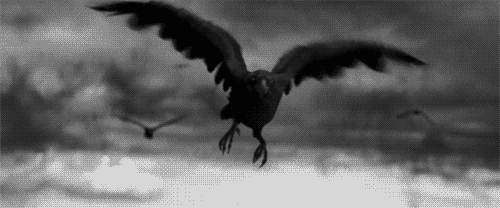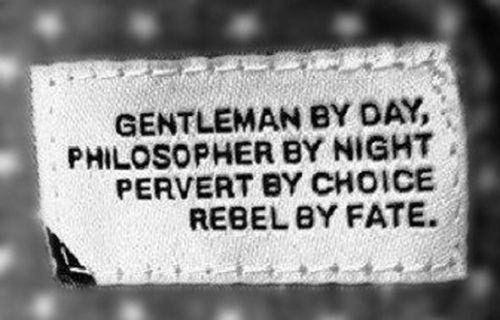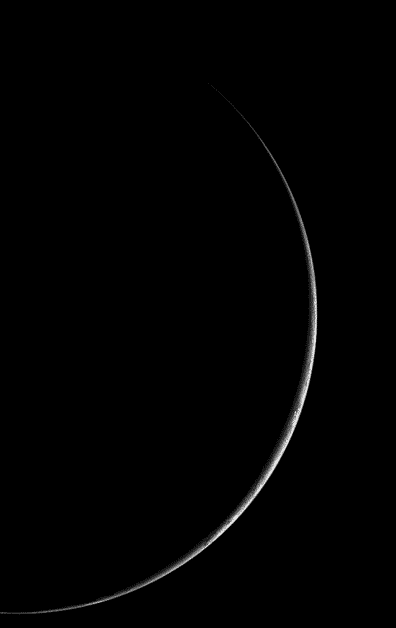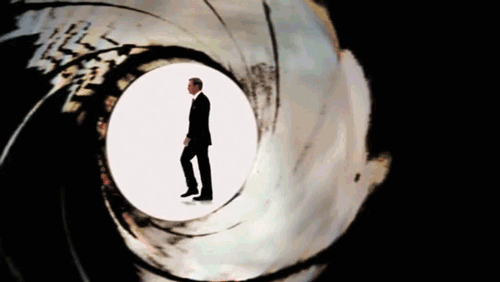
1963's "On Her Majesty's Secret Service" by Ian Fleming is considered to be one of the best James Bond novels. It falls in the middle of the literary trilogy bracketed by "Thunderball" and "You Only Live Twice" to chronicle the crimes of Ernst Stavro Blofeld and his organization SPECTRE.
The film version of the book, released in 1969, is also highly regarded by Bond purists and fans but has been mostly ignored by mainstream audiences. It was critically savaged at the time for an underachieving performance by newcomer George Lazenby as James Bond, and a story that did not deliver the standard 007 formula established in earlier films. Indeed, it was the first Bond film that did not make money at the box-office (although subsequent reissues and pairings with other Bond films allowed it to break even). Because of these and other reasons, it is generally not "counted" in mainstream retrospectives of the series which focus on the films of Sean Connery, Roger Moore and Pierce Brosnan.
But On Her Majesty's Secret Service (hereafter referred to as OHMSS), was supposed to have been filmed several years earlier, first as a follow-up to Goldfinger and then to Thunderball. For various reasons, legal and creative, it was delayed but if it had been released in 1967 instead of 1969, it would have been a markedly different film.

January 1966
The latest James bond film, Thunderball is riding the crest of spy mania. For a while it looks like it will surpass The Sound of Music as the year's number-one box-office hit, with only a handful of other films ahead of it on Variety's "All-Time Box-office Champs" list. No Bond film, before or since, has ever generated as much word-of-mouth enthusiasm or ticket sales. The secret agent craze is at its peak and a dozen new films and television shows are copying the 007 formula, trying to replicate its success. Over the course of the next few months, EON producers Harry Saltzman and Albert R. Broccoli, while hopping from continent to continent attending premieres of Thunderball, are quickly planning the direction of theJames Bond film series. The decisions they make now will influence the series for the next decade and beyond.
Originally the end credits for Thunderball promised "James Bond will return in ON HER MAJESTY'S SECRET SERVICE" but this was cut from release prints when EON reevaluated their options. They had two choices:
1) Do the definitive James Bond film, OHMSS, following Ian Fleming's original series/story arc and definition of the character, taking advantage of an older, more mature Sean Connery as the tired, world-weary 007.
2) One More Time! Forget about Fleming, continuity or the series canon and try to make as much money as possible by replicating their previous successes and building on the gadgets, action, and thrills with humor. Surely the secret agent phenomenon could not last forever as imitation spies were popping up everywhere. Besides, audiences were responding to the lighthearted action/adventure formula established by EON and not a part of the original Fleming books.
Of course we know now that the producers chose option #2. Once that decision was made, it didn't matter which Fleming title was filmed, since they weren't going to adhere to the storyline anyway. In spring of that year plans were made to go to Japan for shooting You Only Live Twice.
But what if Saltzman and Broccoli decided differently, and went with the option of making OHMSS instead? Could it have been the ultimate James Bond film, starring Sean Connery, with a lavish budget, a seasoned and enthusiastic crew, made at that time when Bond-mania was at its zenith and audience interest at its peak?
It was during this period that Broccoli and Saltzman hired veteran British director Lewis Gilbert to helm the next film, before the decision was made to postpone OHMSS. Gilbert would have actually been a fine choice to direct the Fleming story, coming off a huge hit Alfie which won numerous awards in the US and UK (as well as being a box-office hit). It featured a strong romantic story with believable performances by the lead characters, with Michael Caine in the title role. Rather than concentrating on the gadgets, hardware and sci-fi aspects of YOLT, Gilbert possibly would have focused on the interpersonal relationships between Bond/M, Bond/Draco, Bond/Tracy, and most importantly Bond/Blofeld. After all, it was EON, not Gilbert, that took YOLT into outer space and away from Fleming's plot - what might he have done with a more intimate, character-driven story? It's fair to say that not only would the love scenes between Bond and Tracy have been more believable (and more intense) but the confrontation between Bond and Blofeld at Piz Gloria could have had far more verbal and emotional fireworks.
With a huge budget Gilbert would also have enjoyed much of the same crew he used for YOLT: Ken Adam to design the sets, Freddie Young as Director of Photography, John Barry to do the music. All three were at the top of their game professionally at that point, highly in demand, Academy-award-nominated, and anxious to make the "definitive" Bond film. In addition it's likely that Richard Maibaum would've been brought on board to help translate some of the original Fleming story, since he'd been doing that since the first Bond film. Whether Roald Dahl (hired to pen YOLT) would've been retained is anybody's guess, but even a collaboration between him and Maibaum might have been interesting. The result would have been a combination of a larger-than-life, action-packed adventure combined with the original Fleming story - much like Thunderball, Goldfinger, and Dr. No were.
OHMSS 1967 - THE STORY
Hypothetically, it would have been possible to take the basic Ian Fleming plotline and "rearrange" it to accommodate for more action and suspense in the film's first hour, which most audiences found slow in the 1969 version. In fact this was one of the main criticisms leveled by critics at the time (besides their objections to Lazenby) - the premise of "following Bond around" for the first hour of the film, with no mission or objective, while a series of obligatory (and unmotivated) fight scenes were interspersed, strayed too far from the established Bond formula. Similar scenes had been added and shuffled around in Goldfinger, which considerably enhanced the story and actually improved on Fleming's original. Thus a 1967 Maibaum script might have gone like this:
1) A crisis is looming in Europe. Weapons of biological warfare have been used, in small quantities, and the leaders of the free world are at a loss to explain the phenomenon or the cause.
2) James Bond is AWOL, having been searching for the roots of SPECTRE for two years with little success. At this point no one is even sure of who is behind the operation. With SPECTRE currently underground, Bond is enjoying some quiet time while he relaxes, flirts with girls and eventually meets Tracy.
3) A secondary villain is introduced to provide motivation for Bond's mission. He would probably be the equivalent of Mr. Osato in YOLT but with more chops and menace (for the sake of argument let's call him Gumboldt). Perhaps this is who MI6 thinks is responsible for the bio-weapons scare, and dispatches Bond to investigate.
4) Bond however is clearly tired of his job at this point, having "saved the world" once too often and is looking for a way out of his assignment. He contemplates his resignation but changes his mind after a personal encounter with Gumboldt, perhaps in the presence of Tracy.
5) The story cross-cuts between Bond's invesigation/pursuit of Gumboldt, with several hair-raising action scenes and various exotic locales, and his emerging romance with Tracy.
6) Bond learns of the connection between the College of Arms and Count de Bleauchamp, who he suspects to be Blofeld. He assumes the identity of Sir Hillary Bray and infiltrates Piz Gloria. From here on out the film follows Fleming's story (and the 1969 film version).
The hypotheticals advanced in this scenario would presume that Gilbert would be given leeway to adapt the Fleming story his own way, as opposed to following an imposed sci-fi fantasy script from EON (it's hard to see how sci-fi could be included in the context of the original OHMSS story, but after all EON did it in YOLT, Diamonds Are Forever, and subsequent Bond films).
When the film version of YOLT was released, many critics complained of it's heavy dose of hardware and science fiction, and the loss of James Bond as a character. It was also the first Bond film that did not top its predecessor in box-office receipts. The EON "post-mortem course correction," done after the release of every film to gauge its effect on audiences and critics, dictated a return to the original Ian Fleming character and away from gadgets and space hardware.
Thus the 1969 version of OHMSS, directed by Peter Hunt, followed Fleming's storyline closely but along the way took some wrong turns of its own. Hunt was a brilliant editor, responsible for some of the ground-breaking editing techniques pioneered in sixties cinema. His "compression of real-time" style of editing borrowed equally from old British films and contemporary American television. As an EON team member from the beginning it seemed like he was being groomed for the role of director, especially when he was called upon to pull together the fragmented mess that Thunderball had become after director Terence Young walked away from the film when shooting had completed. Hunt rearranged some scenes and successfully restored a narrative to the wandering epic, guaranteeing its place as one of the year's biggest films. As a consequence he was promised directing duties for the next installment, but Harry Saltzman had already made a deal to hire Lewis Gilbert for the next film, which was now slated to be YOLT. Hunt would have to wait another two years for his chance.
Not an experienced director of actors (this was his first time out of the editing room), Hunt was uncomfortable with coaching or motivating them through a series of intimate dialog scenes, preferring to concentrate on his action sequences and fistfights. Thus the novel's rather subtle opening scene on the beach with Bond and Tracy becomes a lavishly-photographed suicide rescue and ensuing fistfight.
Rather than involving the audience with the story and forcing the viewer to be an active participant in the plot (as in the film version of From Russia With Love), Hunt chose to focus on action and editing. The early scenes of his film are punctuated by random fight sequences that seem unmotivated and gratuitous (just why do Draco's men want to kill Bond on the beach, after he's rescued Tracy?) Hunt was also dismissive of Lazenby's inexperience, saying a director could "get an adequate performance out of anyone, with proper editing" but Lazenby was clearly stiff and wooden in some scenes, and overwhelmed by Diana Rigg in others. He shines, however, in the action sequences with a physical ferocity unmatched since the early Connery days. Hunt takes great advantage of this, together with superb cinematography, to distract the audience from Lazenby's other shortcomings. Most of the time it works. Unfortunately he also uses some drop-frame editing techniques, that although novel and trendy at the time seem overly gimmicky and annoying today. The clumsy use of overdubbing by both Lazenby and fellow actor George Baker also distract from an otherwise solid movie.

OHMSS 1967 - THE CAST
There are some fans of George Lazenby's Bond who insist he is "better than Connery could have been." This is in contrast to critics and audiences worldwide who did not accept him in the role, or believe that his scenes with Diana Rigg were more than clumsy attempts at romantic chemistry. Could Connery have projected the depth or emotion that this film demanded? During all of the sixties and seventies, there are very few "acting moments" of tender intimacy in any of his films. He shows affection for Tippi Hedren's character in Hitchcock's Marnie but his portrayal is carefully measured and analytical. His two other 60s films, Woman of Straw and A Fine Madness, with Gina Lollabrigida and Joanne Woodward respectively, also did not give us much in the way of romance.
But the 1968 potboiler-western Shalako has several interesting pointers. It is one of the few films where Connery is allowed to show his acting chops in an extended, intimate scene with a woman. In this case, Brigitte Bardot, who was also up for the part of Tracy in OHMSS!
Although in this film Bardot looks more like one of the Bada Bing girls from TV'sThe Sopranos, her acting ability is (arguably) adequate. One could easily imagine her as the vulnerable but headstrong Countessa DiVincenzo from the picture here, as she fits Fleming's description of a "fair-haired blue-eyed girl of mixed European descent."
Shalako was directed by Edward Dmytryk, best known for The Caine Mutiny with Humphrey Bogart. Dmytryk was an old-school Hollywood director, having worked his way up the studio system; he was not one of the auteurs that were making progressive, groundbreaking, films in the sixties. Instead it follows the formula of a 1950s western, updated with a bit more violence and sex. Connery's attempt at an American accent is uneven, and the almost-all European cast makes for a rather self-conscious period piece to say the least.
But there is a sequence in the film that shares many common elements with the love scene in OHMSS when Bond proposes to Tracy. Both scenes show the hero and heroine in a rare quiet romantic moment, momentarily safe from villains in pursuit, with romantic/sexual chemistry building.
In Shalako Connery exudes confidence and sexual charisma while Bardot plays the sensitive, shy submissive woman There is a genuine "moment" at the end of the scene as she refuses his charms, and based on Connery's reaction its not hard to see what he what might have done with Bond's reactions to Tracy (and her subsequent death) in OHMSS.
Another interesting choice for the part of Tracy might have been actress Julie Christie. Originally interviewed by EON for the part of Domino in TB (and passed over because her breasts were too small, or so the story goes), she was nevertheless an actress of considerable ability and screen presence. Her most recent film Dr. Zhivago was an Oscar-winning smash and her star was rising quickly in Hollywood and overseas. She certainly would have been an interesting match for Connery and their on-camera chemistry would have substantially eclipsed the pairing with Bardot. Christie was adept at playing the "bird with a broken wing" character that the part of Tracy called for and had a streak of independence and feistiness as well.
The other actresses mentioned for the role ran the gamut from Raquel Welch to Faye Dunaway, but in the end Diana Rigg won the part. Was she hired to compensate for newcomer Lazenby, or would she have had the role if Connery played opposite? Impossible to know in retrospect but certainly interesting to speculate.
Another cast change to consider would have been the part of the villain Blofeld. Actor Jan Werich was hired to portray him in YOLT but was replaced at the last minute by Donald Pleasance, who needed extensive makeup effects to make him appear more menacing. One actor who would not have required such treatment was Yul Brynner, the quintessential bald icon, who would have contributed much gravitas to the part. Another interesting pick might have been actor Rod Steiger, not known for his subtlety when interpreting roles but hey, this is a James Bond film! Steiger had recently completed Dr. Zhivago with David Lean and was about to star in his oscar-winning role, In the Heat of the Night.
If Saltzman and Broccoli had chosen to make this film, it's likely that Sean Connery would have walked away from the series anyway, having done the definitive interpretation of the character. It's also probable that the film would have been more successful than the Lazenby/Hunt version of OHMSS, and as a result EON would not have abandoned the Fleming character as they did through the seventies. Their disappointment with the 1969 film was so extreme that they stayed away from "Ian Fleming's James Bond" (for five subsequent films) until 1981's For Your Eyes Only, offering audiences instead a lighthearted Roger Moore as the 70s jet-setting Playboy bachelor version of Bond. A more successful OHMSS would have ensured that following installments would at least borrow more from the original Fleming plotlines rather than scrapping them entirely.
Opinions vary widely on whether things could have worked out this way. There is little in life that you can count on and even fewer things that are "perfect," especially with the limitations and compromises that Hollywood imposes, so perhaps the notion of a 007 film that encapsulated all the essential qualities: story, actors, setting, time period etc., can never truly be realized (or maybe we came as close as we can get with Goldfinger). But taking a look at the decisions made nearly thirty years ago gives us some insight into what might have happened.























No comments:
Post a Comment